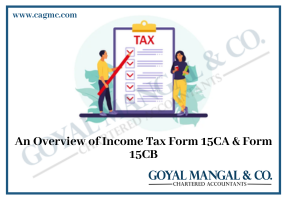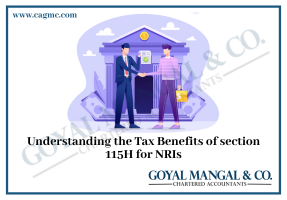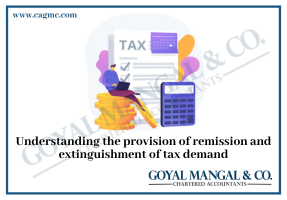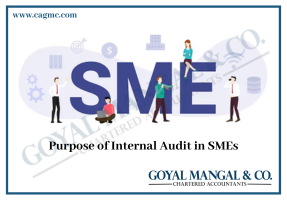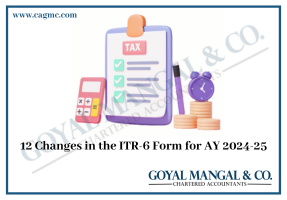
Financial planning is one of the most important aspects in achieving one’s life goals. A solid financial plan may help us manage our income, expenses, and investments, allowing us to live the life we want while accounting for shifting expenses, unforeseen expenses, and economic downturns. But how can one develop a plan that controls risk while ensuring adequate returns for a worry-free future? Surprisingly, it appears that making tiny modifications to the way we manage money is the key. In this article we will discuss Tax Benefits to Wealth Creation and it relation with National Pension System (NPS) in benefitting wealth creation.
Quick Look
The Pension Fund Regulatory and Development Authority (PFRDA) administers and regulates India’s National Pension System (NPS), which is a voluntary defined contribution pension system. The Government of India established the NPS to replace defined benefit pensions for all employees hired after January 1, 2004.
Individuals can contribute to their pension accounts while working and get a pension when they retire under the NPS. The NPS is a relatively option available to all Central Government employees, in which both the employer and the employees contribute 10% of the contribution.
The NPS is like defined contribution plans in the United States, such as the Social Security system, public employee retirement systems, and numerous private pension plans offered by various companies.
Tax Benefits to Wealth Creation and National Pension System (NPS)
Tax Planning is an important aspect of one’s financial planning journey. By knowing how to manage one’s taxes and take advantage of various income tax deductions / exemptions, one can not only meet one’s responsibilities as a citizen but also receive a sizable deduction on their overall tax payment while sticking to their financial plan.
The National Pension System (NPS) is a world-class tax-saving investing option that significantly decreases your tax bill. As an investment cumulative pension plan introduced by the Indian government, any Indian citizen between the ages of 18 and 70, as well as employees from the public, private, and unorganized sectors, except for those serving in the armed forces, can open an NPS account.
While NPS is primarily intended to provide retirement security through attractive investment possibilities available during working years and flexible pension drawing solutions available during retirement years, it is also an excellent tool for tax exemption.
Tax Benefits of Investing in National Pension System (NPS)
One of the biggest advantages of investing in NPS is the tax benefits it offers. The contributions made towards NPS are eligible for tax deductions under Section 80C of the Income Tax Act, 1961, up to a maximum of Rs. 1.5 lakh per annum. Additionally, an additional tax deduction of up to Rs. 50,000 is available under Section 80CCD (1B) for contributions made towards NPS. This means that you can claim a total tax deduction of up to Rs. 2 lakh per annum by investing in NPS.
Apart from the tax deductions, the NPS also offers tax benefits at the time of withdrawal. When you retire, you can withdraw up to 60% of your corpus as a lump sum, and the remaining 40% needs to be used to purchase an annuity plan. The lump sum withdrawal is tax-free, while the annuity income is taxable at your applicable income tax rate.
How to Register under National Pension System (NPS)?
Person can register under NPS online as well as offline.
Let’s have a look at both online and offline procedure for registration.
Offline Registration under National Pension System (NPS): Individuals in India can register for the National Pension System (NPS) offline by following the steps outlined below:
- Visit a Point of Presence (POP) service provider near you.
- Fill out the registration form with your personal information, including your name, date of birth, PAN, and contact information.
- Select the account type and investment selection.
- Make a designation for the account’s beneficiary.
- Submit the form together with the necessary documents, including identification, address proof, and a photograph.
- Make your first contribution payment.
Individuals will obtain a Permanent Retirement Account Number (PRAN) card after completing the registration process, which is a unique identifying number for their NPS account1. The PRAN card can be used to monitor the NPS account online and make regular payments to their retirement fund.
Online Registration under National Pension System (NPS): Individuals in India can register for the National Pension System (NPS) online by following the steps outlined below:
- Go to website of NSDL i.e., enps.nsdl.com.
- On this website, you will find instruction about NPS subscription.
- Fill out the registration form with your personal information, including your name, date of birth, PAN, and contact information.
- Select the account type and investment selection.
- Make a designation for the account’s beneficiary.
- Submit the form together with the necessary documents, including identification, address proof, and a photograph.
- Make your first contribution payment.
After completing the registration process, individuals can manage their NPS account online and make regular payments to grow their retirement corpus.
Charges applicable under National Pension System (NPS)
The NPS expenses are modest in comparison to other investing options, making it an appealing option for retirement planning in India. The charges are deducted from the subscriber’s contributions and are indicated in the account statement.
The following are the costs for India’s National Pension System (NPS) where intermediary is central record keeping agency.
- Account opening fee: Rs.50 (applicable to both Tier 1 and Tier 2 accounts).
- Annual maintenance fee per account: Rs. 190 (applicable to both Tier 1 and Tier 2 accounts).
- Transaction fee: Rs.4 per transaction.
The following are the costs for India’s National Pension System (NPS) where intermediary is Point of Presence (POP).
- Initial subscriber registration and contribution upload: Rs 100.
- Initial Contribution Upload: 0.25% of the initial contribution amount from subscriber subject to a minimum of Rs, 20 and a maximum of Rs, 25,000.
These charges may change as per the amendments made by the government.
Types of Account in National Pension System (NPS)
NPS offers a great deal of freedom in terms of deposits and withdrawals, with two types of account choices available: NPS Tier 1 and Tier 2. Both NPS accounts have intrinsic benefits, and taxpayers can choose the one that is best for them.
- NPS Tier 1: The NPS Tier 1 account has been specifically developed for the establishment of retirement security and is the one related with the tax breaks mentioned above. Investments in an NPS Tier 1 account cannot be withdrawn until retirement or the age of 60, unless there are extraordinary circumstances such as the account holder’s death or medical emergency, etc.
An individual must make a minimum contribution of Rs. 500 upon starting the account and can take up to 60% of the total amount accumulated after retirement in a tax-free manner. The remaining 40% is utilized to purchase annuities, which provide a regular monthly income source in the form of a pension. During the contributing years, the NPS subscriber must deposit Rs 1,000 every year and contribution per instalment should be minimum Rs.5000.
- NPS Tier 2: In contrast, the NPS Tier 2 account is a voluntary savings account with no lock-in term. It functions similarly to an open mutual fund in terms of simple liquidity, with withdrawals typically taking up to three days.
Individuals can either remove the full corpus as a flat sum or make unlimited withdrawals. There are no tax breaks available to NPS Tier 2 investors, except for government personnel, who can deduct contributions to NPS Tier 2 under Sec 80 C. However, to take advantage of this tax break, the subscriber must commit to a three-year lock-in period.
There is no minimum balance or minimum contributions requirements in a year, however initial contribution is minimum Rs.1000 and contribution per instalment is Rs.250.
Exempt-Exempt-Exempt (EEE) Status under National Pension System (NPS)
If you have an NPS Tier 1 account, you will have Exempt-Exempt-Exempt (EEE) status, with the First Exempt being donations to it. Any individual who holds an NPS Tier 1 account may claim a tax benefit under Section 80 C up to a maximum of Rs. 1.5 lakhs.
Furthermore, NPS Tier 1 accounts are entitled for an additional tax deduction of Rs 50,000 under IT Sec 80 CCD (1 B), which is in addition to the Rs 1.5 Lac limit specified under.
And the tax breaks for NPS don’t end there. Employer contributions of up to 10% of the employee’s basic + DA salary per year are allowed for NPS Corporate Model subscribers.
Retirement Account Number and Return on National Pension System (NPS)
Retirement Account Number will remain constant even if you change jobs or switch from employee to self-employment or vice versa.
There is no fixed rate of return in NPS like other investments like FDRs.
Classification of Assets under National Pension System (NPS)
The assets in India’s National Pension System (NPS) are categorised into four categories based on the level of risk and return:
- Equity: Equity invests in equity shares of companies registered on the National Stock Exchange (NSE) or the Bombay Stock Exchange (BSE). It has the biggest risk and the highest possible payoff.
- Corporate Debt: Corporate debt is a type of asset class that invests in fixed income securities issued by corporations. It carries a modest risk and offers the potential for a moderate return.
- Government Securities: Government securities invest in fixed income securities issued by the federal and state governments. It has low risk and offers a low potential return.
- Alternative investment funds: This asset class invests in alternative investment vehicles such as real estate investment trusts (REITs), infrastructure investment trusts (InvITs), and others. It has a moderate to high risk and has the potential for high returns.
Now, the question is how much of our contribution will be invested or classified under which assets; the answer is that NPS Subscribers have two options: a. Active Choice b. Auto Choice.
Concept of Active Choice and Auto Choice under National Pension System (NPS)
Let’s have a look on the meaning of Active and Auto Choice:
- Active Choice: The subscriber can select the asset allocation based on their risk tolerance and investing objectives under this option. The percentage of investment in equities, corporate debt, government securities, and alternative investment vehicles is up to the subscriber. This option is appropriate for customers who are knowledgeable about investments and wish to actively manage their investment portfolio.
- Auto Choice: The investment portfolio is handled automatically in this option based on the subscriber’s age. When the subscriber is young, the percentage invested in equity is higher, and it gradually declines as the subscriber ages. As the subscriber gets older, his or her allocation to debt and government securities grows. This option is appropriate for subscribers who lack investment understanding and prefer a hassle-free investment alternative.
Ultimate NPS Blueprint for your Retirement
Investing in NPS is not only tax-efficient, but it also helps in creating wealth for your retirement. Since the NPS invests in various asset classes, it offers the potential for higher returns than traditional fixed-income investments. Moreover, the compounding effect of the returns earned on your investments over the long term can result in significant wealth creation. Here is your ultimate NPS Blueprint for your Retirement:
- Determine Retirement Corpus: The first step in retirement planning is to determine the retirement corpus required. The retirement corpus depends on various factors, including the current lifestyle, inflation, and life expectancy. A financial planner can help in determining the retirement corpus.
- Choose the Investment Option: NPS offers two investment options, namely Active Choice and Auto Choice. In Active Choice, the subscriber can choose the asset allocation, while in Auto Choice, the asset allocation is based on the age of the subscriber. The subscriber can choose the investment option based on the risk appetite and investment goals.
- Determine Contribution: The contribution towards NPS depends on the retirement corpus required, age, and income. NPS allows a maximum contribution of 10% of the salary for salaried individuals and 20% of the gross income for self-employed individuals. The contribution can be increased or decreased as per the individual’s financial situation.
- Open NPS Account: To invest in NPS, an individual needs to open an NPS account with a Point of Presence (PoP) or a bank. The subscriber needs to submit the required documents, including PAN card, Aadhaar card, and address proof.
- Monitor the Investment: Retirement planning is a long-term process, and it is essential to monitor the NPS investment regularly. The subscriber can check the NPS account balance and transaction history online. The subscriber can also switch between the investment options as per the investment goals and risk appetite.
Withdrawal from National Pension System (NPS)
In general, maturity under this plan occurs when the subscriber reaches the age of 60; however, the person may prolong it up to the age of 70 on a voluntary basis. You may take 60% of the amount accumulated at the time of maturity as a lump sum and purchase an annuity for the balance.
The fundamental question here is whether an amount from an NPS can be withdrawn in an emergency or need. So, the answer is that there is a three-year lock-in period from the date of account opening, after which a person may withdraw the amount only three times before maturity, and this withdrawn amount cannot exceed 25% of the original amount.
Furthermore, after meeting specific criteria, this sum can be withdrawn prior to maturity in some pre-specified events or situations. Some of these instances include children’s education, children’s marriage, first home purchase or construction and critical illness.
Conclusion
Retirement planning is a crucial aspect of financial planning, and investing in NPS is an excellent option for creating wealth for your retirement. The tax benefits offered by NPS make it a popular choice among investors. Moreover, the potential for higher returns and the power of compounding can help you achieve your retirement goals. If you haven’t started planning for your retirement, it’s time to consider investing in NPS and secure your financial future.


